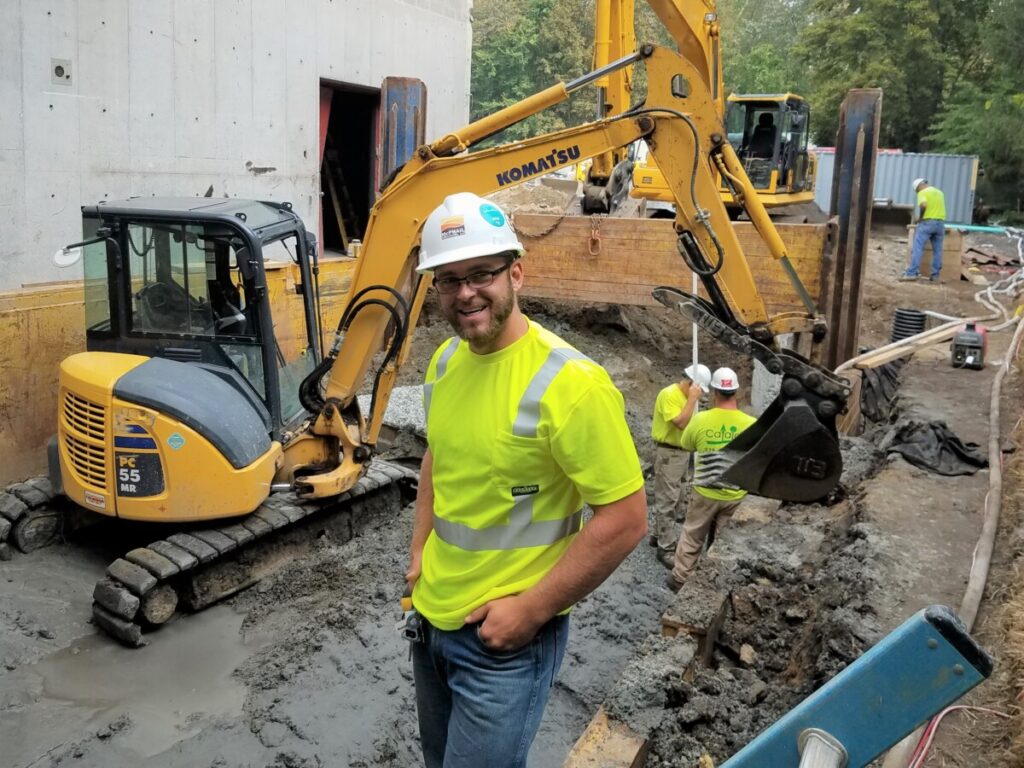The Benefits of Partnering with a Leading Consulting Engineer for Your Organization Needs
The Benefits of Partnering with a Leading Consulting Engineer for Your Organization Needs
Blog Article
The Interdisciplinary Approaches in the Geotechnical Market: Linking the Space Between Design, Geology, and Environmental Scientific Research for Ideal Project Results
The integration of engineering, geology, and ecological scientific research within the geotechnical sector is not merely beneficial; it is important for accomplishing optimum project end results. This interdisciplinary partnership promotes a comprehensive understanding of complicated site conditions, enabling innovative solutions to arise. By checking out key roles and successful case research studies, we can discover the dynamic interplay that drives project success. Challenges remain in effectively taking care of these multidisciplinary initiatives, elevating questions regarding future trends and prospective innovations. What techniques might arise to promote this important collaboration and boost the efficacy of geotechnical techniques?
Relevance of Interdisciplinary Collaboration
The relevance of interdisciplinary partnership in the geotechnical sector can not be overemphasized. Effective geotechnical tasks call for the assimilation of diverse know-how from different areas, consisting of design, geology, and environmental scientific research. This collaboration guarantees that all aspects of a task are thought about, causing comprehensive solutions that attend to intricate obstacles.
When functioning in isolation,Interdisciplinary partnership fosters technology by enabling specialists to share understandings and methods that may not be noticeable. By leveraging the toughness of multiple self-controls, groups can identify possible threats, maximize style procedures, and enhance the sustainability of geotechnical projects. In addition, such partnership advertises an alternative understanding of site-specific conditions, which is essential for accurate analysis and decision-making.
The intricacy of geotechnical jobs requires a worked with approach to problem-solving. Ultimately, interdisciplinary cooperation is important for progressing best techniques and accomplishing excellence in the geotechnical sector.
Trick Roles of Each Technique
Partnership amongst numerous self-controls is not just helpful; it is essential for the effective execution of geotechnical projects. Each discipline-- design, geology, and ecological scientific research-- plays an unique yet interconnected role that contributes to predict effectiveness and sustainability.
Geotechnical engineers are mainly responsible for designing foundations and making certain structural honesty. They analyze soil and rock homes to evaluate load-bearing capabilities, giving necessary information for risk-free building and construction methods. Their competence enables the formulation of innovative remedies to complicated obstacles.

Ecological researchers evaluate the potential effects of building on ecosystems and water sources. They perform environmental evaluations and develop mitigation approaches to decrease adverse results. By integrating ecological considerations, they guarantee conformity with policies and promote sustainability throughout the task lifecycle.
Instance Studies of Successful Combination
Effective assimilation of geotechnical techniques can be exemplified through numerous case research studies that highlight the efficiency of teamwork in addressing complex engineering difficulties. One notable example is the building of the Hong Kong-- Zhuhai-- Macau Bridge, where a joint approach including geotechnical engineering, geology, and environmental science was critical. Engineers and rock hounds operated in unison to examine the seabed click this conditions and enhance the foundation design, making sure stability and lessening ecological effect.
An additional impactful instance is the enhancement of incline stability in the San Francisco Bay Location, where an interdisciplinary team combined geotechnical evaluation with ecological analyses. By incorporating hydrological research studies and geological surveys, the group efficiently recognized potential landslide threats and executed effective mitigation steps, enhancing safety and security and sustainability.
Additionally, the redevelopment of Brownfield websites frequently needs a multidisciplinary technique. In one situation in Chicago, cooperation amongst geotechnical engineers, environmental scientists, and urban organizers led to the successful remediation of contaminated dirt, permitting the safe transformation of the website right into a more community park. These instance research studies show that interdisciplinary collaboration not only addresses technical obstacles however also cultivates cutting-edge options that benefit both tasks and areas.
Obstacles in Multidisciplinary Projects

Additionally, working with routines and process amongst various groups can be troublesome, especially when each self-control has distinct job milestones and deliverables. This imbalance can cause delays and boosted prices. The challenge of resource appropriation additionally impends big; guaranteeing that customized proficiency is readily available at critical times requires mindful preparation and foresight.
Last but not least, regulative compliance presents one more substantial difficulty. Each self-control may deal with different governing structures, and aligning these needs to meet task purposes can be complex and lengthy. Dealing with these obstacles necessitates strong management and effective communication approaches to cultivate cooperation and guarantee that multidisciplinary groups function cohesively towards shared goals.
Future Trends in Geotechnical Practices
As the geotechnical market evolves, emerging fads are improving practices to address the obstacles encountered in multidisciplinary projects - geotechnical engineers. One significant pattern is the enhanced assimilation of innovative modern technologies, such as synthetic intelligence and device knowing, into geotechnical analysis and design. These modern technologies improve predictive modeling and risk Visit This Link evaluation, allowing designers to make more enlightened decisions throughout the job lifecycle

In addition, the adoption of electronic twins and real-time tracking systems is coming to be much more common. These devices promote ongoing evaluation of soil conditions and architectural efficiency, enabling for prompt interventions when concerns develop.
Final Thought
In conclusion, the combination of engineering, geology, and ecological scientific research is important for achieving optimum outcomes in the geotechnical market. Effective situation studies show the benefits of this method, while recognizing the obstacles dealt with in multidisciplinary projects.
The combination of design, geology, and environmental scientific research within the geotechnical market is not merely useful; it is vital for achieving optimal task outcomes. Effective geotechnical projects require the integration of diverse proficiency from different fields, consisting of engineering, geology, and ecological scientific research.Browsing the complexities of multidisciplinary projects in the geotechnical industry presents several substantial difficulties.As the geotechnical sector progresses, arising trends are reshaping practices to resolve the difficulties faced in multidisciplinary jobs. Geotechnical designers are progressively teaming up with environmental researchers to make certain that tasks line up with sustainability objectives and comply with regulatory requirements.
Report this page